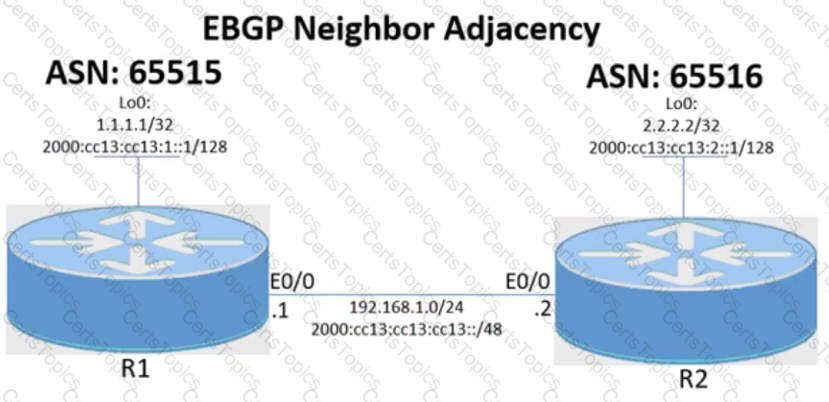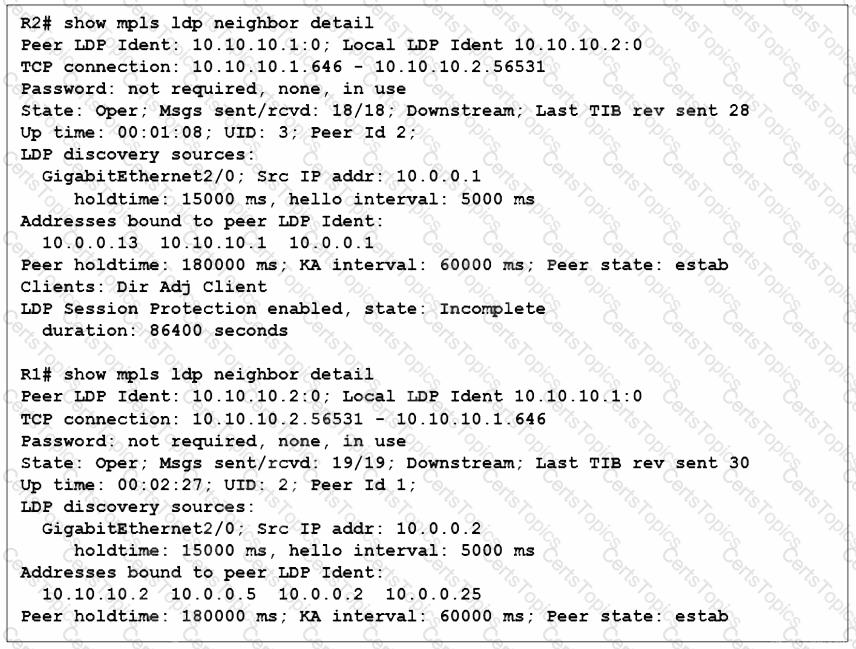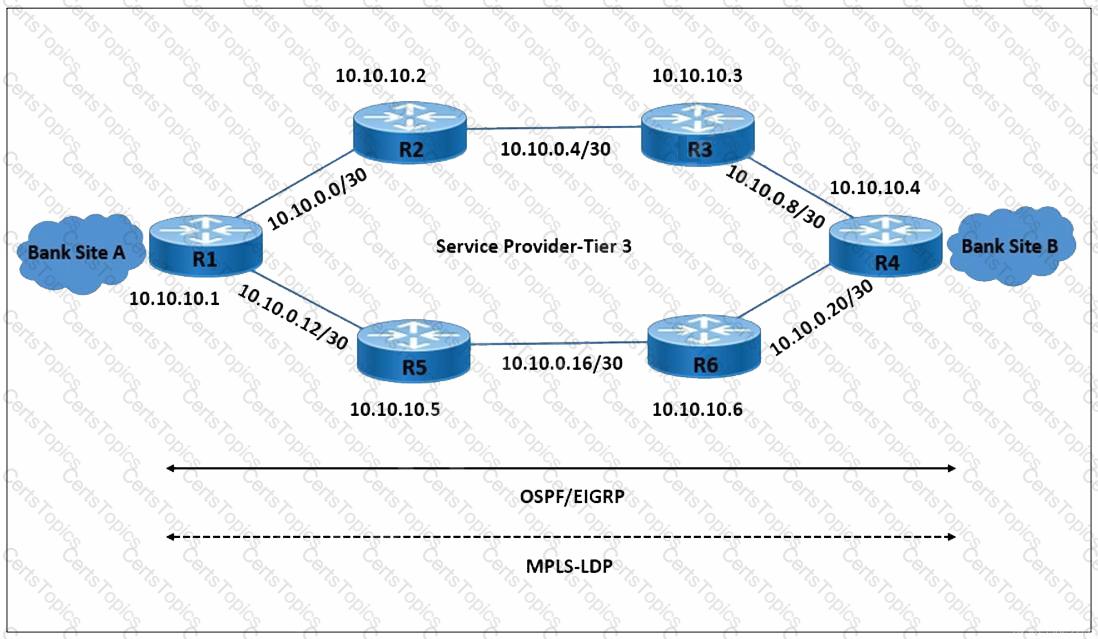Guidelines -
This is a lab item in which tasks will be performed on virtual devices.
• Refer to the Tasks tab to view the tasks for this lab item.
• Refer to the Topology tab to access the device console(s) and perform the tasks.
• Console access is available for all required devices by clicking the device icon or using the tab(s) above the console window.
• All necessary preconfigurations have been applied.
• Do not change the enable password or hostname for any device.
• Save your configurations to NVRAM before moving to the next item.
• Click Next at the bottom of the screen to submit this lab and move to the next question.
• When Next is clicked, the lab closes and cannot be reopened.
Topology:

Tasks -
Configure the BGP routing protocol for R1 and R2 according to the topology to achieve these goals:
1. Configure EBGP neighbor adjacency for the IPv4 and IPv6 address family between R1 and R2 using Loopback0 IPv4 and IPv6 addresses. All BGP updates must come from the Loopback0 interface as the source. Do not use IGP routing protocols to complete this task.
2. Configure MD5 Authentication for the EBGP adjacency between R1 and R2. The password is clear text C1sc0!.
A network engineer is testing an automation platform that interacts with Cisco networking devices via NETCONF over SSH. In accordance with internal security requirements:
NETCONF sessions are permitted only from trusted sources in the 172.16.20.0/24 subnet.
CLI SSH access is permitted from any source.
Which configuration must the engineer apply on R1?
You are testing the capabilities of MPLS OAM ping.
Which statement is true?


Refer to the exhibit. LDP peering between routers R1 and R2 is dropped when the link between R1 and R2 is taken offline. However, LDP peering between R2 and R3 stays up when the link between R2 and R3 is taken offline. Which action allows MPLS traffic forwarding to continue normally if the link between R1 and R2 goes down?